U.S. tariff trade shifts: how AI and outsourcing are reshaping business strategies
Recent shifts in U.S. trade policy have reshaped global commerce. The introduction of new tariffs on imports from China, Canada, Mexico, and Europe has affected supply chains, increased operational costs, and influenced business planning worldwide.
For US companies, adapting means restructuring supply chains, automating production, and exploring offshore partnerships to remain profitable.
This article explores how AI and outsourcing are reshaping business strategy in response to US tariff policies, focusing on American industries, geopolitical implications, and long-term adaptation strategies.
U.S. trade adjustments: impacts on business strategy
The tariffs are a tool to revitalize domestic manufacturing, reduce reliance on China, and force trade renegotiations. However, this stance has led to:
- Increased costs for US manufacturers reliant on imported steel, aluminum, and semiconductors.
- Retaliatory tariffs from China, Canada, and the EU, affecting American agriculture, automotive, and consumer goods sectors.
- Geopolitical uncertainty, making long-term investment planning difficult for US multinational corporations.
A Reuters report highlights that businesses are now facing supply chain fragmentation, prompting firms to diversify away from single-country dependencies.
AI: the technological answer to tariff-induced costs
AI-powered domestic manufacturing: rebuilding “made in America”
The tariffs have made foreign supply less attractive for certain industries, encouraging firms to invest in automation and AI to reduce labor costs and maintain competitiveness. US manufacturers are increasingly using AI-driven robotics to replace manual assembly line jobs, mitigating reliance on expensive imported components while improving efficiency.
AI in supply chain optimization
US firms are adopting AI-driven analytics to:
- Navigate disrupted trade routes
- Forecast tariff impact
- Identify cost-saving alternatives
AI is particularly effective in predicting price fluctuations and helping companies find domestic suppliers or alternative trade partners. This allows companies to be more resilient and flexible in their supply chains.
These innovations are not only transforming the labor force but also impacting total sourcing costs. Key implications include:
- Evolving supplier networks – Companies that integrate cutting-edge automation and AI-driven processes will gain a competitive edge, while others risk falling behind.
- Shifting labor dynamics – Traditional workforce challenges in supply chains, such as labor shortages and compliance issues, may change as automation reduces reliance on manual processes.
- Real-time supply chain intelligence – Digital transformation enables procurement teams to access and validate vast amounts of real-time data from multiple supply chain stakeholders, improving decision-making and risk management.
To stay competitive, businesses must rethink sourcing strategies, and leverage technology to drive efficiency and resilience in supply chain operations.
Outsourcing: a strategy for global cost efficiency
US companies rethinking global production
For many industries, tariffs have made traditional supply chains unsustainable. While the current administration encourages reshoring, businesses still seek low-cost offshore production to remain price competitive. Instead of solely relying on China, companies are shifting operations to Vietnam, India, and Mexico, where tariffs are lower or nonexistent.
IT and business process outsourcing: shifting from cost-saving to strategic advantage
Beyond manufacturing, American firms are also leveraging outsourcing in IT, customer service, and financial operations. Rather than purely cutting costs, firms now view outsourcing as a strategic move to access specialized talent and technological innovation without the regulatory burdens of domestic hiring.
Tech firms, for instance, are outsourcing AI development and cybersecurity operations to specialized hubs in Latin America to avoid skill shortages and rising US labor costs.
Industry-specific impacts: who wins and who loses?
Industries benefiting from tariffs
- Steel & aluminum: Domestic producers have seen higher demand as imported metals become more expensive.
- AI & automation: Increased costs have accelerated AI adoption, particularly in industrial robotics.
- Domestic agriculture (certain sectors): Some farmers benefit from tariff protection on imports.
Industries suffering from tariffs
- Automotive: Car manufacturers are absorbing higher raw material costs, impacting profitability.
- Retail & consumer goods: Higher tariffs on apparel, furniture, and electronics are increasing prices for American consumers.
- Construction: The sector has faced steel price hikes of 8-10%, delaying major infrastructure projects.
Navigating the future of U.S. trade policy
Adapting to tariff volatility
With ongoing tariff measures being used as part of trade negotiations, businesses must remain adaptable by:
- Monitoring tariff changes and renegotiating supplier contracts in real time.
- Investing in AI to enhance forecasting and cost efficiency.
- Diversifying supplier networks to reduce exposure to trade disputes.
Competing globally while adapting locally
While recent trade policies emphasize local industry development, companies are also pursuing global expansion strategies to remain competitive.
These trade adjustments are influencing how businesses approach global operations. Companies are rethinking supply chains, adopting automation, and reassessing offshore strategies in response to shifting international dynamics.
By integrating AI-driven efficiencies and strategic outsourcing, US businesses can counteract rising costs while maintaining a foothold in the evolving global trade landscape. As tariffs continue to fluctuate, companies that invest in innovation and maintain flexible global partnerships will be better positioned to navigate changing market conditions.
How Meta IT can help businesses navigate trade tariffs
At Meta IT, we empower businesses with cutting-edge AI-driven insights and digital solutions to navigate the challenges posed by trade tariffs. As global trade policies evolve, companies must adapt their supply chains, automation strategies, and market positioning to stay competitive.
How Meta IT supports businesses facing tariff challenges
- AI-powered market insights: leverage Meta IT’s advanced data analytics to predict tariff-related cost increases and optimize trade strategies, with little manual and human analysis.
- Global business networking: connect with international partners and explore outsourcing opportunities to mitigate supply chain disruptions.
- Automation and digital transformation: implement AI-driven automation tools to enhance efficiency and reduce dependency on high-cost labor.
Meta IT is more than a technology company. We are a strategic partner for businesses adapting to global economic shifts. Explore how our AI, automation, and digital infrastructure can help you optimize operations and stay ahead in a changing trade landscape.


